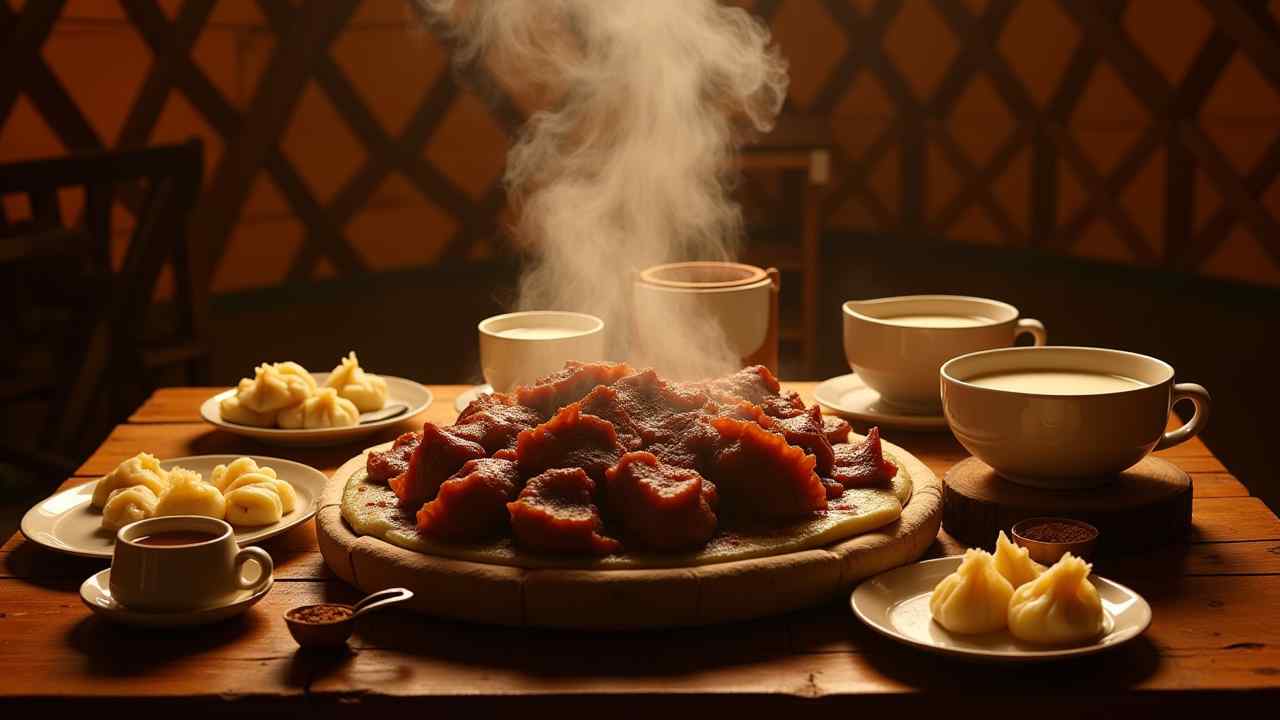
🇲🇳 A Guide to the Traditional Mongolian Diet (Meat, Dairy & Nomadic Cuisine)
🇲🇳 A Taste of the Steppe: Exploring the Traditional Mongolian Diet 🇲🇳
The Mongolian diet is one of the most unique and fascinating food cultures in the world. It is a cuisine shaped by centuries of nomadic pastoralism. It is also a product of the harsh, extreme climate of the Mongolian steppe. This is not a "diet" in the modern sense of weight loss. It is a traditional way of eating for survival and sustenance.
The food is hearty, simple, and incredibly rich in protein and fat. It is built around the animals that have sustained the Mongolian people for generations. It is a true nose-to-tail way of eating. This is a cuisine of pure function and flavor.
This guide will explore the main components of this powerful diet. Let's journey to the land of Genghis Khan and discover its culinary heart. ✅
🤔 What is the Core Philosophy of the Mongolian Diet?
The core of the traditional Mongolian diet is built around the "five snouts." These are the five main types of livestock herded by the nomads. They are horses, cattle (including yaks), camels, sheep, and goats. The diet is divided into the "red foods" of winter and the "white foods" of summer.
In the cold winter, the focus is on eating meat ("red foods") for its high calorie and fat content. This provides the energy needed to survive the freezing temperatures. In the summer, the diet shifts to dairy products ("white foods"). This is a time of preservation and lighter eating.
🥩 What is the Role of Meat?
Meat is the absolute cornerstone of the Mongolian diet. Mutton (sheep meat) is the most common and beloved type. It is eaten in large quantities, often boiled. Boiling is a traditional cooking method. It is very efficient and creates a nutritious broth that is also consumed.
Fat is not trimmed; it is prized for its high energy content. Popular dishes include Buuz, which are steamed dumplings filled with mutton. This is similar in concept to Turkish manti. Another famous dish is Khorkhog, a rustic barbecue where the meat is cooked with hot stones.
🥛 What About Dairy, the "White Foods"?
Dairy is the other pillar of the nomadic diet, especially in the summer. Milk from all the herd animals is used. It is often fermented and preserved in various ways. These products are incredibly important.
Famous dairy products include:
- Airag: The national drink. It is a fermented, slightly alcoholic beverage made from mare's milk.
- Aaruul: Dried milk curds that are very hard. They are a staple snack and a way to preserve milk solids for the winter.
- Öröm: A thick, clotted cream, similar to English clotted cream or Turkish "kaymak."
- Suutei Tsai: This is the traditional Mongolian milk tea. It is a salty tea made with milk and sometimes a bit of butter.
The importance of fermented dairy like yogurt ("tarag") is a cultural link to other nomadic traditions, like those in Türkiye.
- Are Vegetables and Grains Part of the Diet?
Historically, vegetables were a very small part of the nomadic Mongolian diet. The harsh climate and mobile lifestyle made agriculture difficult. In modern times, some vegetables have been incorporated. Root vegetables like potatoes, carrots, and onions are the most common. They are often added to stews.
Grains like flour and rice are also used. They are mostly imported. Flour is essential for making the dough for dumplings (buuz) and noodles. The crisp autumn weather here on the plains of Bursa is a reminder of the changing seasons that so deeply shape this hardy and practical cuisine. 🍂